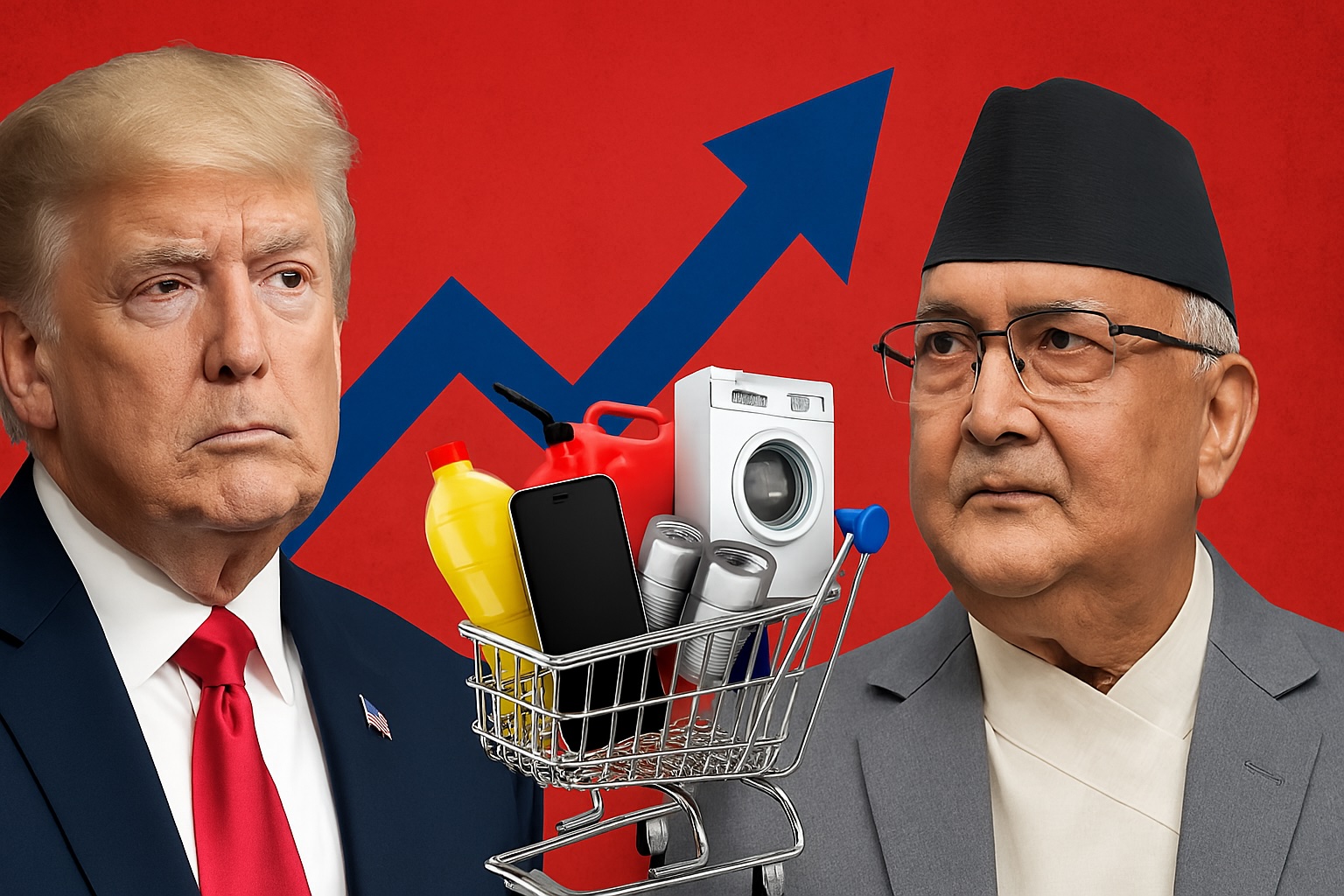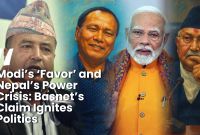Trump's Tariff Tsunami: Is America About to Become the Next Nepal?

Washington D.C./Kathmandu – As the United States braces for a seismic shift in trade policy marked by President Donald Trump’s proposed tariff blitz, consumers in Nepal may find the debate strikingly familiar. Where Americans now face the specter of sharp price hikes for imported goods, Nepalis have long been living with the crushing weight of exorbitant import taxes—offering a sobering case study of what happens when global trade is throttled by protectionist policies.
Trump’s latest tariff proposal, confirmed by campaign officials and interim party representatives, includes a blanket 104% tariff on Chinese imports, part of an escalated trade war aimed at "rebalancing global trade and restoring American manufacturing." An additional 90% tariff on low-value items under $800—which dominate platforms like Shein and Temu—has rattled American retailers and households alike. With cumulative rates nearing 125% on average, the move is being hailed by supporters as a bold assertion of economic sovereignty. But for economists, it sets off alarm bells.
“The consumer will pay the price,” noted Edward Lum, a senior trade policy analyst in Washington. “Tariffs of this magnitude function as a hidden tax. Essential goods—phones, clothes, electronics—will all cost more.”
Nepal: Living with the Cost
Across the globe in Nepal, this is not hypothetical. It is daily life. The landlocked country, unable to produce many of its own consumer goods, relies heavily on imports. To finance the government’s operations, the state leans heavily on customs duties, VAT (13%), excise taxes, and additional levies. For some products—especially automobiles, fossil fuels, and electronics—the cumulative tax burden can exceed 200%, sometimes reaching 250%.
This fiscal model has made Nepal one of the most expensive places in South Asia for consumer goods. Petrol and diesel, which power not just vehicles but the country’s entire logistics chain, are among the most taxed commodities. The result: transportation costs surge, affecting the price of food, construction materials, and other everyday goods.
Even smartphones and home appliances, necessities in a digital age, are often viewed as luxuries by the tax code. An iPhone can cost up to twice as much in Kathmandu as in New Delhi. The result is reduced purchasing power and increased inequality, especially in rural areas where incomes lag and access is limited.
A Recession Already in Motion
Nepal’s economy, already fragile, is currently in a technical recession. Recent data points to declining industrial output, a credit crunch, and chronic liquidity shortages in the banking sector. Informally, many Nepalis describe a more profound crisis—a state of “mass depression,” driven by skyrocketing unemployment, political instability, and a wave of youth emigration. The so-called brain drain has become a defining feature of the country’s economic landscape.
In this environment, high import taxes serve a dual role: they fund the state and simultaneously impose significant hardship on citizens. Entrepreneurs are discouraged, businesses struggle to scale, and consumers are forced into frugality or the grey market.
When Sticker Shock Hits the U.S.
In contrast, American consumers have enjoyed decades of relatively low import costs, aided by globalization and favorable trade deals. A sudden jump in prices—especially on everyday consumer goods—is likely to trigger sharp public backlash. Civic awareness of economic policy is higher, and organized responses, such as boycotts or pressure on lawmakers, are more common.
This is where the two countries diverge. In Nepal, high prices have been normalized. Despite periodic protests against corruption and inflation, there is less focused dissent against the tax structure itself. Many citizens, particularly outside Kathmandu, remain unaware of the specific mechanics driving price inflation. Others feel powerless against a political class perceived as deeply entrenched and unaccountable.
Parallel Pressures
Yet the parallel is compelling. In both nations, the consumer bears the brunt of macroeconomic decisions. Whether driven by geopolitical strategy—as in Trump's case—or by fiscal dependence, as in Nepal’s, the effect is similar: imported goods become more expensive, demand falters, and inflation creeps into the broader economy.
If Trump's policies persist, the U.S. may begin to experience a compressed version of Nepal’s economic story—a scenario in which protectionist policy backfires, hurting domestic consumers more than foreign producers. Already, analysts warn of potential supply chain disruptions, retaliatory measures by China, and a deepening of global recessionary trends.
For Nepal, any decline in global trade—particularly in China and India—could exacerbate its existing struggles. Remittances may drop, import prices could rise further, and economic isolation could deepen.
Conclusion: A Shared Future?
As Trump’s tariff strategy unfolds, Nepal stands as both a mirror and a warning. Its experience illustrates the real-world impact of high trade barriers on ordinary lives: limited access, inflated costs, and suppressed economic vitality. While their causes differ—one rooted in economic nationalism, the other in fiscal necessity—the burden is shared by those least able to bear it.
Whether America learns from Nepal’s experience remains to be seen. But if consumer prices climb as predicted, many Americans may soon understand what it feels like to live in a country where the price tag on global goods comes with a heavy domestic cost.
KP Sharma Oli Donald Trump US Tariff



![From Kathmandu to the World: How Excel Students Are Winning Big [Admission Open]](https://nepalaaja.com/img/70194/medium/excel-college-info-eng-nep-2342.jpg)
